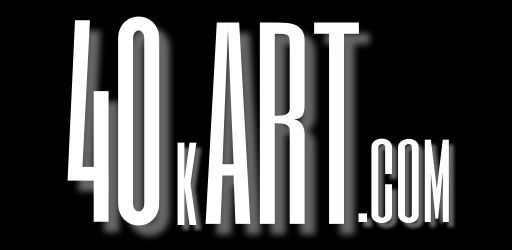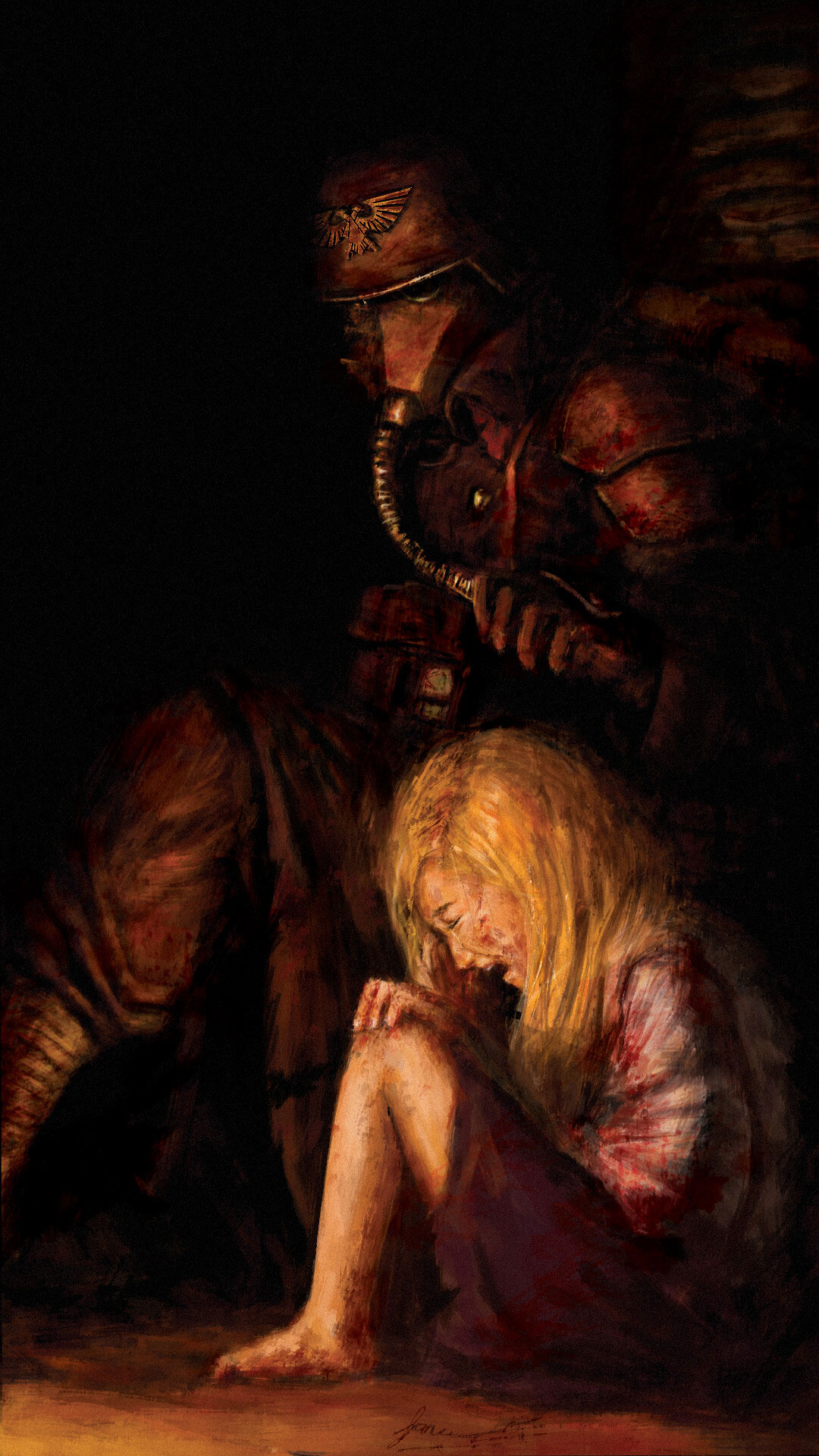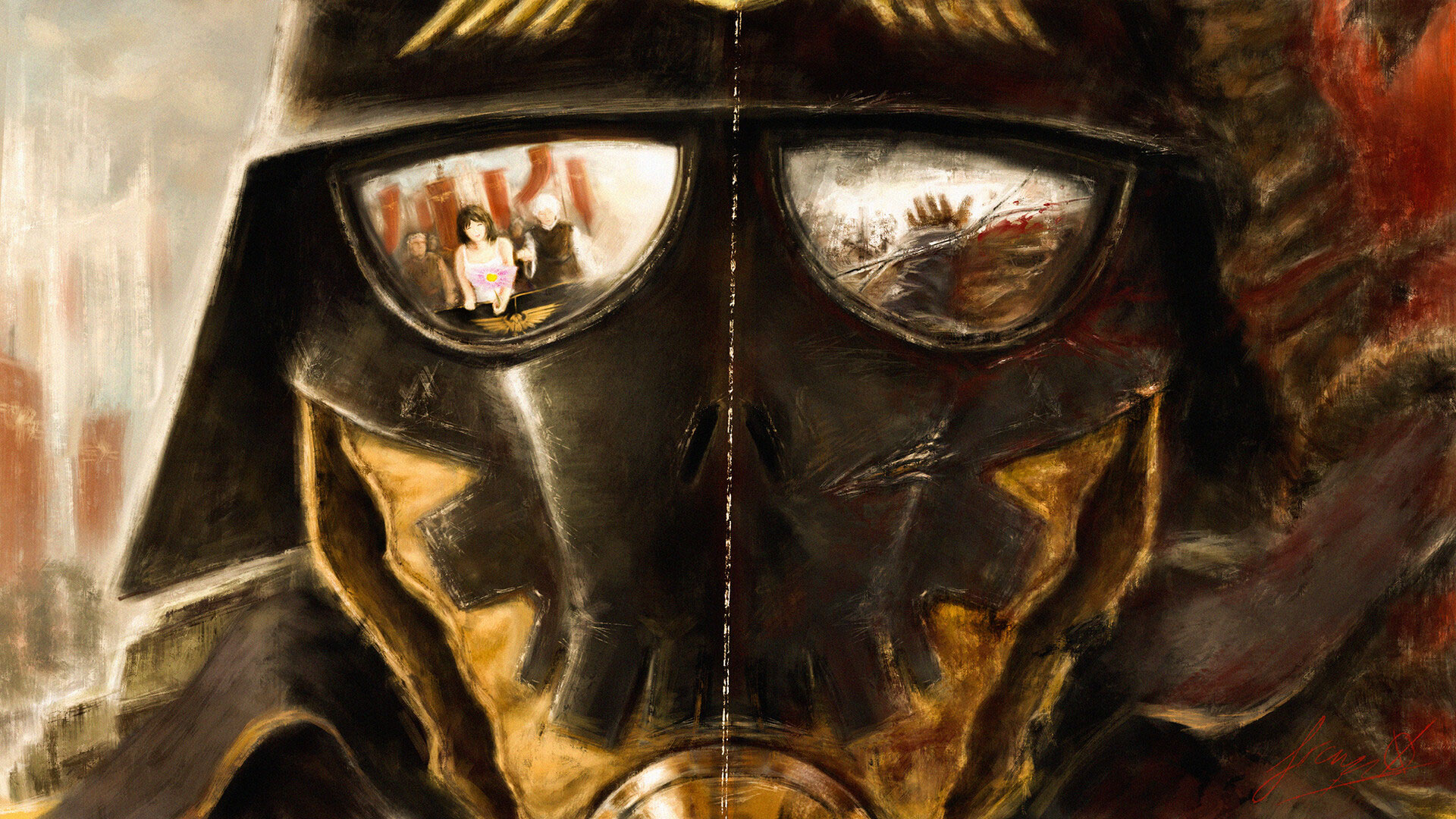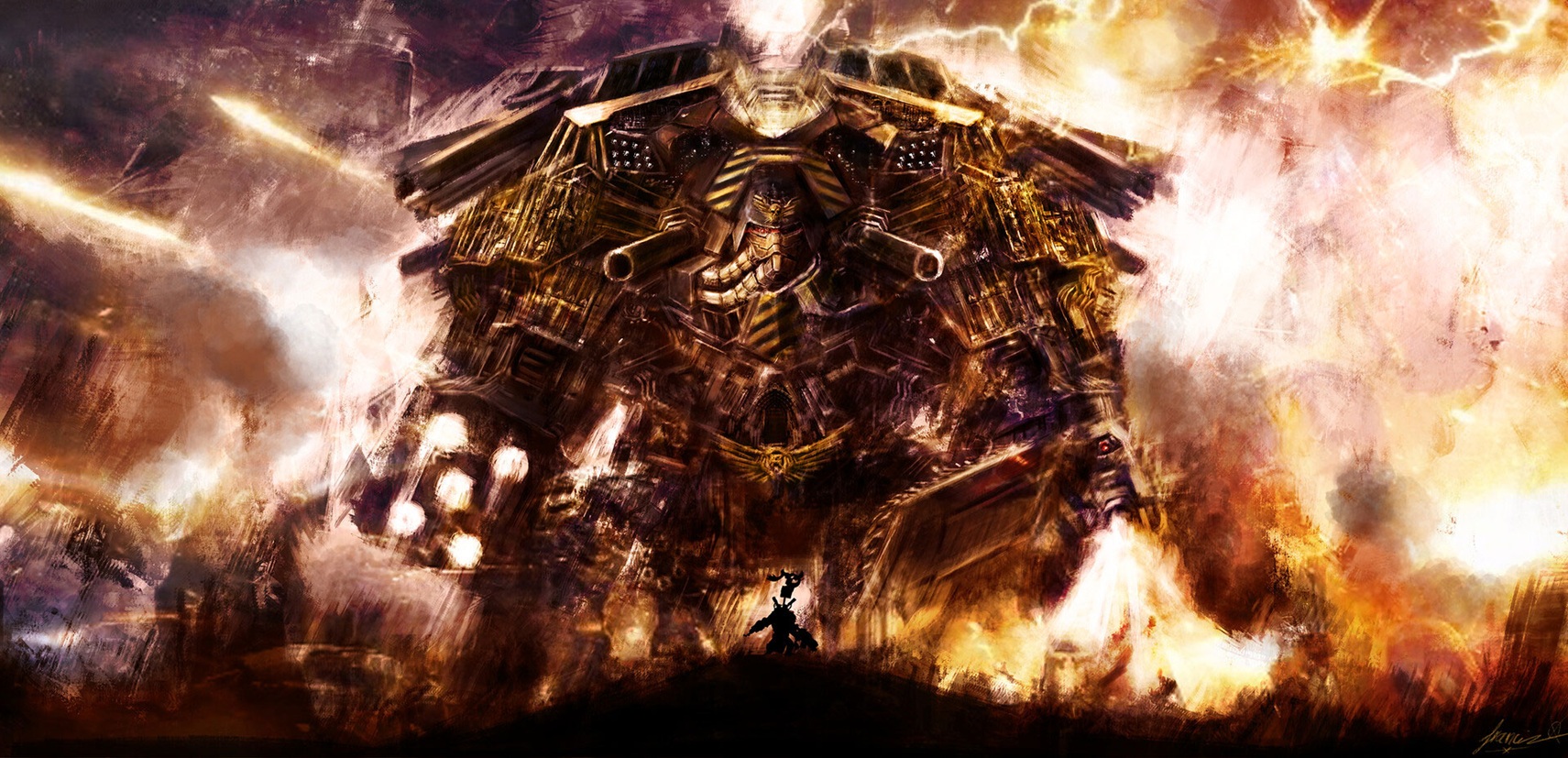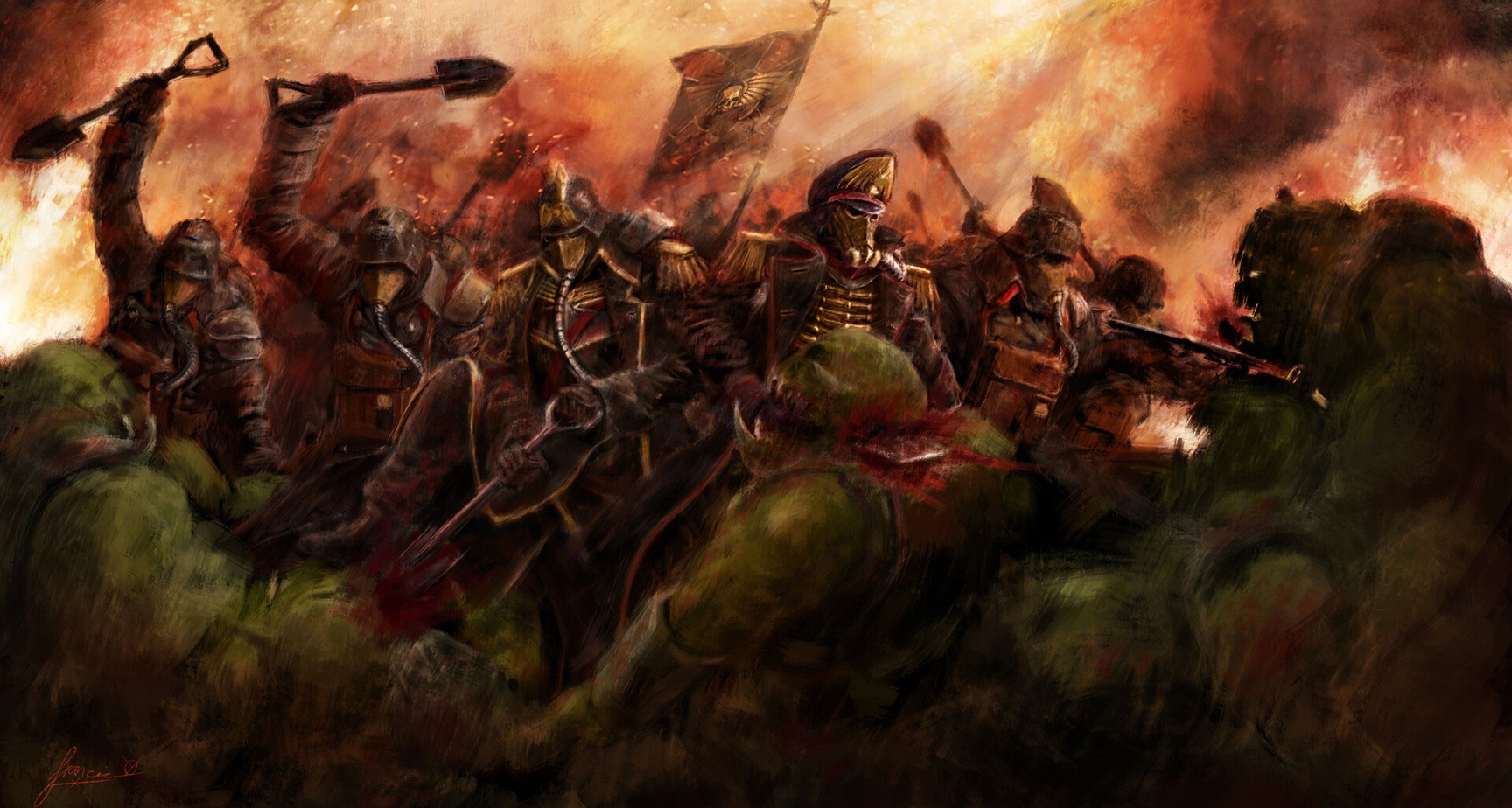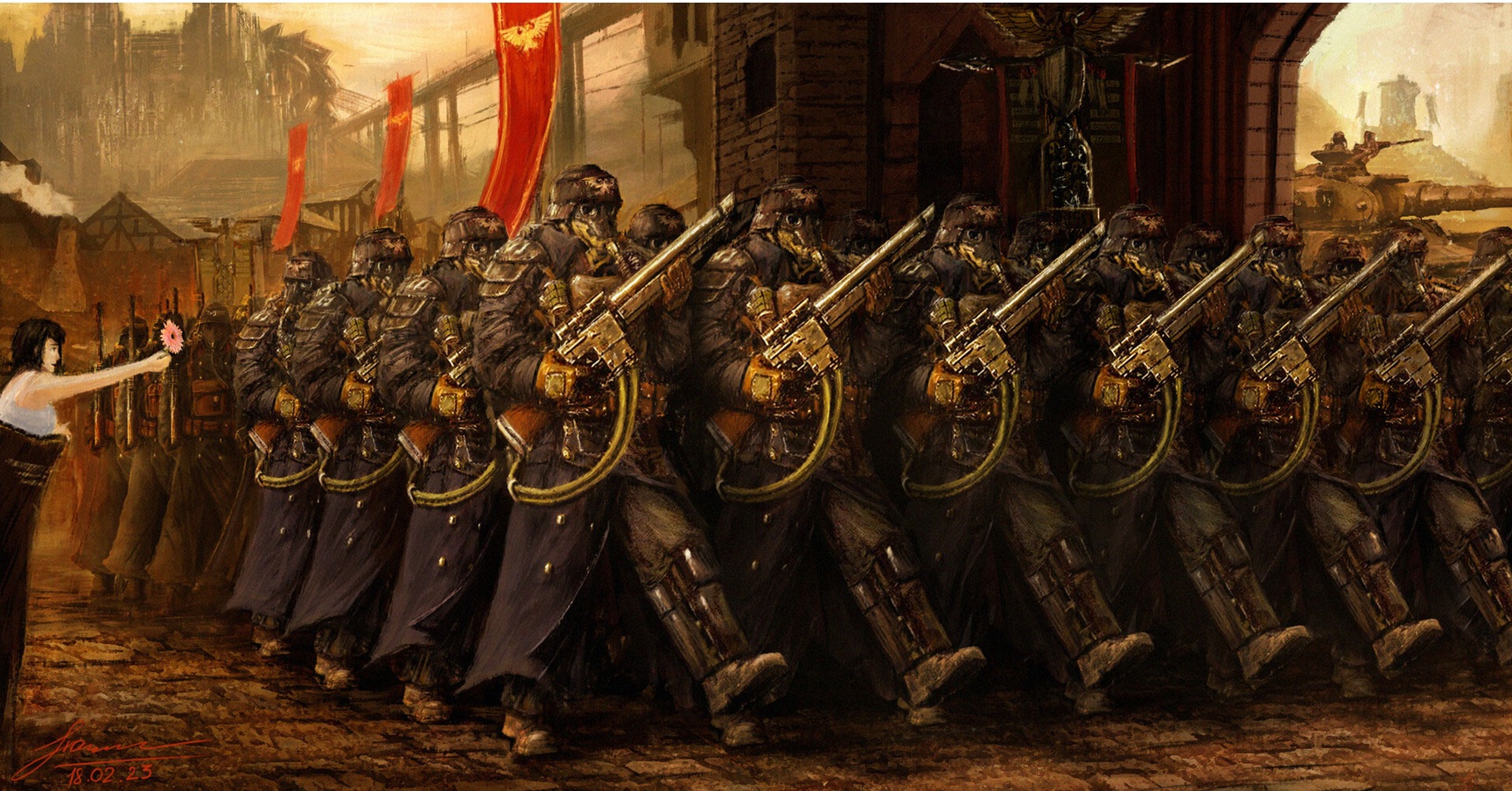
The Grim March of the Death Korps: Symbolism, Sacrifice, and the Futility of Hope in Warhammer 40k
The Grim March of the Death Korps
This haunting artwork captures the unrelenting discipline and cold resolve of the Death Korps of Krieg as they march in perfect formation through a devastated city. Each soldier is clad in their signature long trench coats and gas masks, which conceal any hint of humanity, turning them into avatars of war and sacrifice. Their lasrifles are angled with precision, hoses feeding from rebreathers as they march in lockstep under crimson banners. The scene is dimly lit by a sepia-toned dusk, evoking a sense of fading hope and war-weariness. A young woman in the foreground offers a single flower toward the soldiers, her gesture of peace striking a jarring contrast against the cold machine of the Imperium. Her vulnerability underscores the emotional and moral weight of endless war in the grimdark galaxy.
The Stoic Symbolism of Krieg
The Death Korps of Krieg are infamous among the Astra Militarum for their fanatical devotion to the Emperor and utter disregard for their own lives. Born from the ashes of a nuclear civil war that consumed their home world of Krieg, these regiments are forged from a culture of penitence, sacrifice, and obedience. Their soldiers are raised in underground bunkers, bred for war and trained from childhood to embrace death as a duty. In battle, they favor trench warfare, attrition tactics, and unwavering morale, often fighting until none remain. This brutal discipline makes them ideal for siege operations and hopeless fronts that would shatter other Imperial Guard regiments. Their very presence in a war zone is a symbol that the Imperium has deemed the conflict worth winning at any cost.
A Glimpse of Imperial Armor
In the background, behind the marching infantry, an Imperial tank rumbles through the city ruins. The tank appears to be a variant of the Leman Russ Battle Tank, a mainstay of the Astra Militarum’s armored divisions. Its silhouette is unmistakable, with a squat, heavily armored hull and a powerful turret-mounted battle cannon. Two crew members can be seen exposed, scanning the surroundings for threats, as if even this moment of parade requires caution. The Leman Russ is known for its ruggedness and firepower, capable of withstanding immense punishment and returning it in kind. Its presence reinforces the militarized atmosphere of the image, reminding us that every inch of peace in the Imperium is bought with blood and steel.
The Mood and Message
The overall tone of the artwork is one of tension between hope and futility. The flower offered by the civilian is a timeless image of innocence and peace, but in the face of the unfeeling advance of Krieg, it seems tragically naïve. Yet, that gesture is not meaningless—it humanizes the scene and highlights the contrast between the Imperium’s war machine and the people it claims to protect. The detailed composition, with banners flying and ruins looming in the haze, conveys the sheer scale of destruction and order that define life in the 41st millennium. This is a world where peace is not merely elusive, but nearly impossible, and where even beauty feels out of place. The Death Korps of Krieg embody that contradiction: protectors of humanity who have forgotten what it means to be human.
